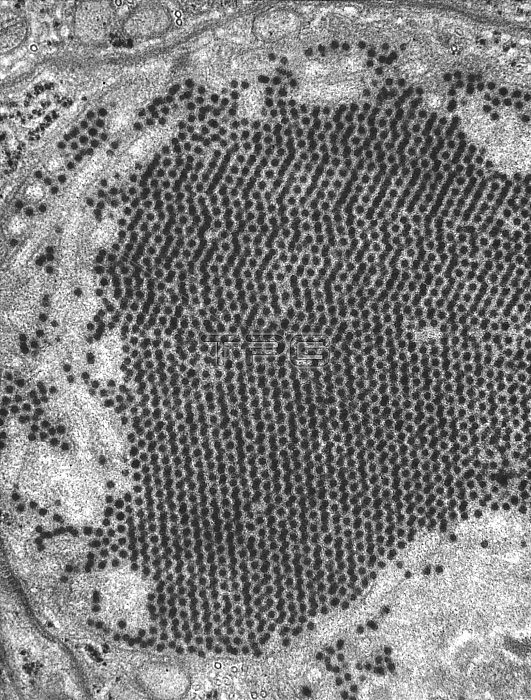
Transmission electron micrograph (TEM) revealed the presence of numerous St. Louis encephalitis (SLE) virions contained within a mosquito salivary gland tissue sample. SLE virus is a member of the genus Flavivirus, family Flaviviridae. Other similar diseases are West Nile virus (WNV), eastern equine encephalitis (EEE), western equine encephalitis (WEE), and La Crosse encephalitis. Mosquitoes become infected by feeding on birds infected with the SLE virus. Infected mosquitoes then transmit the virus to humans and animals during the feeding process. The SLE virus grows both in the infected mosquito and the infected bird, but does not make either one sick. Many persons infected with SLE virus have no apparent illness. People with mild illness often have only a headache and fever. More severe infection is marked by headache, high fever, neck stiffness, stupor, disorientation, coma, tremors, occasional convulsions (especially in infants) and spastic (but rarely flaccid) paralysis.
| px | px | dpi | = | cm | x | cm | = | MB |
Details
Creative#:
TOP22237448
Source:
達志影像
Authorization Type:
RM
Release Information:
須由TPG 完整授權
Model Release:
N/A
Property Release:
No
Right to Privacy:
No
Same folder images:

 Loading
Loading